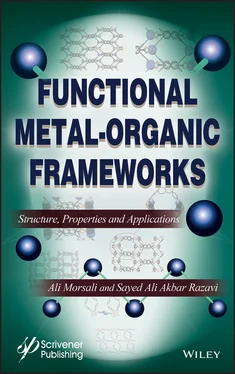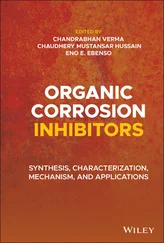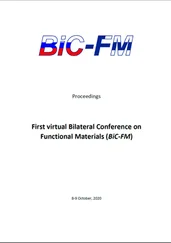36. Kobielska, P.A., Howarth, A.J., Farha, O.K., Nayak, S., Metal–organic frameworks for heavy metal removal from water. Coord. Chem. Rev. , 358, 92–107, 2018.
37. Horcajada, P., Serre, C., Vallet-Regí, M., Sebban, M., Taulelle, F., Férey, G., Metal–organic frameworks as efficient materials for drug delivery. Angew. Chem. , 118, 6120–6124, 2006.
38. Zhang, J.-W., Zhang, H.-T., Du, Z.-Y., Wang, X., Yu, S.-H., Jiang, H.-L., Water-stable metal–organic frameworks with intrinsic peroxidase-like catalytic activity as a colorimetric biosensing platform. Chem. Commun. , 50, 1092–1094, 2014.
39. Ai, L., Li, L., Zhang, C., Fu, J., Jiang, J., MIL-53 (Fe): A Metal–Organic Framework with Intrinsic Peroxidase-Like Catalytic Activity for Colorimetric Biosensing. Chem.–Eur. J. , 19, 15105–15108, 2013.
40. Hu, P.-P., Liu, N., Wu, K.-Y., Zhai, L.-Y., Xie, B.-P., Sun, B., Duan, W.-J., Zhang, W.-H., Chen, J.-X., Successive and Specific Detection of Hg2+ and I–by a DNA@ MOF Biosensor: Experimental and Simulation Studies. Inorg. Chem. , 57, 8382–8389, 2018.
41. Qiu, G.-H., Lu, W.-Z., Hu, P.-P., Jiang, Z.-H., Bai, L.-P., Wang, T.-R., Li, M.-M., Chen, J.-X., A metal-organic framework based PCR-free biosensor for the detection of gastric cancer associated microRNAs. J. Inorg. Biochem. , 177, 138–142, 2017.
42. Horcajada, P., Gref, R., Baati, T., Allan, P.K., Maurin, G., Couvreur, P., Férey, G., Morris, R.E., Serre, C., Metal–Organic Frameworks in Biomedicine. Chem. Rev. , 112, 1232–1268, 2012.
43. Campbell, M.G., Sheberla, D., Liu, S.F., Swager, T.M., Dincă, M., Cu3(hexaiminotriphenylene)2: An Electrically Conductive 2D Metal–Organic Framework for Chemiresistive Sensing. Angew. Chem. Int. Ed. , 54, 4349–4352, 2015.
44. Morozan, A. and Jaouen, F., Metal organic frameworks for electrochemical applications. Energy Environ. Sci. , 5, 9269–9290, 2012.
45. Ramaswamy, P., Wong, N.E., Shimizu, G.K., MOFs as proton conductors–challenges and opportunities. Chem. Soc. Rev. , 43, 5913–5932, 2014.
46. Meng, X., Wang, H.-N., Song, S.-Y., Zhang, H.-J., Proton-conducting crystalline porous materials. Chem. Soc. Rev. , 46, 464–480, 2017.
47. Wang, S., Wang, Q., Feng, X., Wang, B., Yang, L., Explosives in the cage: Metal–organic frameworks for high-energy materials sensing and desensitization. Adv. Mater. , 29, 1701898, 2017.
48. Lu, W., Wei, Z., Gu, Z.-Y., Liu, T.-F., Park, J., Park, J., Tian, J., Zhang, M., Zhang, Q., Gentle, T.J.C.S.R., III, Tuning the structure and function of metal–organic frameworks via linker design. Chem. Soc. Rev. , 43, 5561–5593, 2014.
49. Li, B., Chrzanowski, M., Zhang, Y., Ma, S., Applications of metal-organic frameworks featuring multi-functional sites. Coord. Chem. Rev. , 307, 106–129, 2016.
2
Amine Decorated Metal–Organic Frameworks
Abstract
In this chapter, chemical properties of amine functions discussed and then these chemical features have been extended in the synthesis of amine decorated metalorganic frameworks. Application of amine decorated metal-organic frameworks reveals that, they applied successfully in deferent applications especially CO 2post-combustion capture and release, metal ion and picric acid detection and removal of some pollutants like indole and quinoline from oil.
Keywords: Amine, functional metal-organic frameworks, CO 2capture, picric acid detection, oil denitrogenation, metal ion detection, electrophilic substitution reactions, Lewis basic catalysis
2.1 General Chemical Properties of Amine Function
Amine is among the frequently applied organic functional groups in the structure of functional MOFs (FMOFs). Although, the chemistry of amine is simple, it is useful and effective. The chemistry of amine is dominated by the non-bonding electron pair on nitrogen atom and positively charged hydrogen atom.
The electrostatic potential map for the van der Waals surface of amine function reveals localization of negative charge on N atom due to high electronegativity of N atom engaged in N‒H bond and its non-bonding electrons. In this view, amine can (as Lewis basic site) interact with Lewis acid species. Also, it can accept one proton from Brønsted acid to form ammonium cations. Moreover, through nitrogen atom, amine group can act as hydrogen bond acceptor site. In addition, accumulation of negative charge on nitrogen atom enables it to engage with polar and quadruple molecules.
Another characteristic of amine function is revolved around H atom(s). Since these H atoms are positively charged, they can participate in a hydrogen bonding. Overally, amine function can interact as both hydrogen bond donor and hydrogen bond acceptor sites.
2.2 Function–Application Properties
Such simple but useful chemistry of amine is practical for development of FMOFs for certain applications. For example, they can apply as a polarizing site for interaction with quadruple gas molecules like carbon dioxide [1–8] and H-bond donor/acceptor gases [9], in sensing of metal ions as Lewis acid sites [10, 11], removal or sensing of hydrogen bond donor or hydrogen bond acceptor chemicals [12–17] or in heterogeneous catalysis as Lewis basic sites [18–20]. In this chapter, we deeply discuss about application of amine FMOFs in different fields [21].
Gas adsorption is a field that amine FMOFs extensively applied owing to delicate host–guest chemistry of amine function with polar or quadrupolar gas molecules [22]. Owing to environmental issues, selective CO 2capture is a concern that extensively studied by scientists [23]. In this field, amine FMOFs show very high efficiency. Possible (which is proved experimentally and theoretically) CO 2(C)·(N)amine and CO 2(O)·(H)amine interactions give rise to high affinity between quadrupole carbon dioxide molecules and polar amine site. However, a mark difference exists between interactions of CO 2molecule with aliphatic or aromatic amines. This observation is being caused by different basicity of arylamine and alkylamine functional groups. Due to delocalization of non-bonding lone pairs of N atom within aromatic ring in arylamine groups, they carry lower amount of negative charge on N atoms rather aliphatic amines. So, there is a stronger interaction between N atom of aliphatic amine with partially positive carbon of carbon dioxide molecule. The use of arylamines could favor strong physisorption (30–50 kJ·mol −1) with CO 2while in case of alkylamines host–guest interaction is based on chemisorption process. Although, stronger interaction in case of CO 2capture by alkylamine could lead to higher selectivity, but it is necessary to mention that release of carbon dioxide molecules are not energy conservative in this case while strong physisorption between CO 2and arylamine decorated FMOFs is very favorable in case of carbon dioxide release. So, to attain maximum level of CO 2release and optimized CO 2–amine interaction, it is absolutely essential to engineer the structural features of MOFs as well as their Lewis basicity.
2-aminoterphthalic acid is favorite amine functionalized ligand for synthesis of amine decorated FMOFs for different purposes especially CO 2separation. UiO-66-NH 2and CAU-1 are two amine decorated based on 2-aminoterphthalate ligand. Since UiO-66-NH 2and CAU-1 are decorated with arylamine functions, they represent higher affinity to CO 2molecules rather non-functional parent frameworks through strong physisorption. UiO-66-NH 2shows higher adsorption capacity (CO 2uptake (mmol·g –1) = ≈ 8.5 vs ≈ 7), isosteric heat of CO 2adsorption at low loading (−32 vs −25.5 kJ·mol −1) and CO 2/N 215:85 selectivity (66.5 vs 37.5) rather UiO-66. CAU-1 has improved zero coverage enthalpy (−48 vs −32 kJ.mol −1) and CO 2/N 215:85 selectivity (101 vs 66.5) rather UiO-66-NH 2[24, 25]. In these FMOFs, both CAU-1 and Uio-66-NH 2synthesized using 2-aminoterphthalic acid ligand and the difference between CO 2∙(−NH 2) interaction (which is understood through zero coverage enthalpy) is attributed to the structural differences of these FMOFs.
Читать дальше












